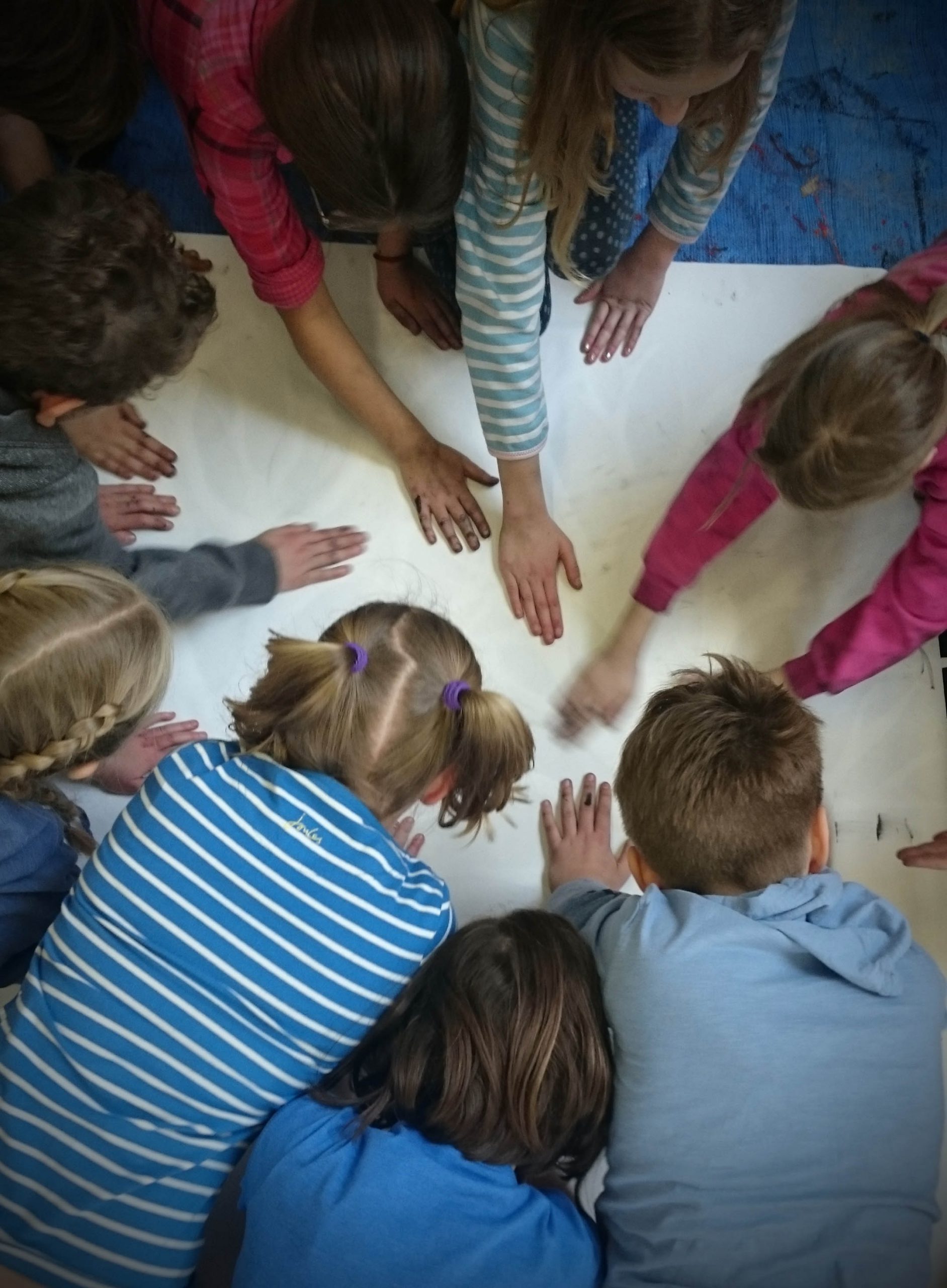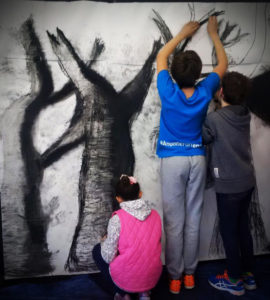Yr 6 Group explores ‘Clockwork’ by Philip Pullman
A really exciting and productive day was spent exploring visual language to represent themes and ideas from the book ‘Clockwork’ by Philip Pulman with a YR6 class.
‘Clockwork’ is a dark story but with really interesting comments on creativity and the creative process. There is a moment in the book where 2 characters are compared. Karl is a clockwork maker and Fritz is a story teller:
“Here’s the truth. If you want something, you CAN have it, but only if you want everything that goes with it, including all the hard work and the despair, and only if you’re willing to risk failure. That’s the problem with Karl: he was afraid of failing, so he never really tried”.
“…Fritz was an optimist and Karl was a pessimist, and that makes all the difference in the world…..He was going to wind up the story, set it going and make up the end when he got there…he was an optimist“
I love this articulation of creativity as an act of optimism and of hope, creativity promoting well-being . Another reason to promote and develop creative thinking in our children and young people…!
On the day we explored how to create atmosphere and drama in visual imagery by using chirascuro, and silhouette.
The children learnt how to use charcoal and rubber to create dark and light and were able to work on a really big scale creating a dark and mysterious forest..
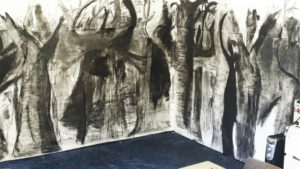

We explored a range of mono-printing techniques both large and small scale and used collage to layer images in order to create foreground and background
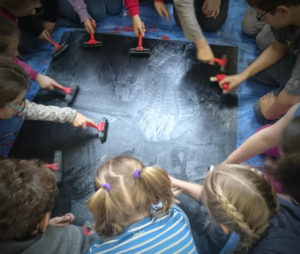

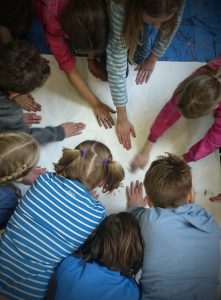

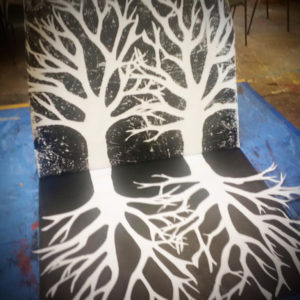

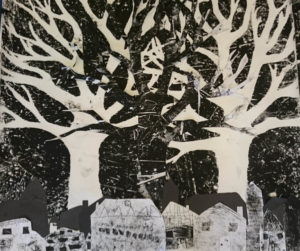

Around the theme of clockwork we considered the way that the characters, the places and the narrative were all interconnected:
“And once you’ve wound up a clock, there’s something frightful in the way it keeps on going at its own relentless pace…’
“Some stories are like that. Once you’ve wound them up , nothing will stop them; they move on forwards till they reach their destined end, and no matter how much the characters would like to change their fate, they can’t.”
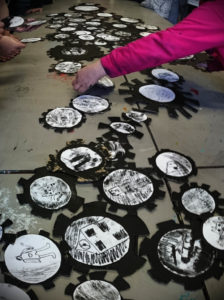

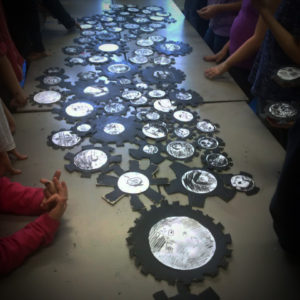

Using drawing by monoprinting the children created a cog for each chosen character or place in the story. These cogs were then connected to other cogs until all the characters and places interlinked in a complicated potential mechanism of over 100 pieces….All wound up and ready to go!

